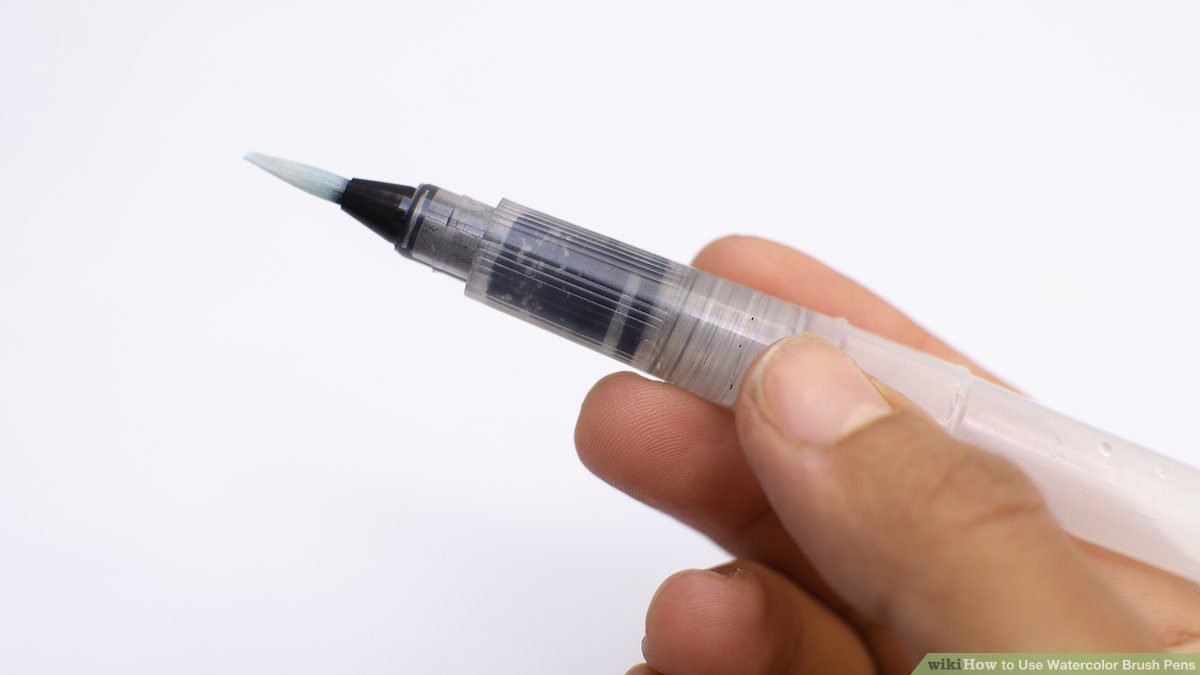Watercolor brush pens are a type of art supply that combines the convenience and versatility of a pen. However, they also have the water-soluble properties of watercolor paint. These pens usually have a nylon or synthetic brush tip that can be loaded with watercolor ink or pigment.
Watercolor brush pens are popular among artists, illustrators, and hobbyists for their ease of use. They also are very portable, and have the ability to create vibrant and fluid watercolor effects. They are often used for various art forms such as painting, drawing, lettering, and coloring.
My problem in painting with watercolor is that I like to paint with few tools as I am quite unorganized. Watercolor brushes make the process of having a water cup completely removed. Therefore, you are able to just keep wetting your brush immediately with just a squeeze!
Watercolor brush pens are built with water in the middle of the pen, so that you fill it up and squeeze out more water when needed. When you are painting with watercolor, the more water, the thinner the color! In this post, I will explain watercolor brush pens and the benefits of them.
What You Need:
Watercolor Paper
Watercolor paper is specifically designed to handle water-based media, such as watercolor brush pens. It is heavier and more absorbent than regular paper, preventing it from warping or buckling when wet. Look for watercolor paper that is labeled as “cold-pressed” or “hot-pressed” for different textures and effects.
Personally, I like to use around 90-300lb paper. This ensures that your paper does not get “pulpy.”
Palette or Mixing Surface
You will need a palette or a mixing surface to blend and dilute the colors from your watercolor brush pens. This can be a traditional artist’s palette or even a plastic plate or a plastic palette with wells.
Usually with watercolor, if you are not interested in mixing shades, you can just layer. If youre learning how to paint with watercolor, just use really thin layers in different colors on top of each other to build.
These are the basics you need to get started with watercolor brush pens. When you gain experience and develop your own style, you will choose to experiment with different techniques. Practicing with the mediums will go a long way.

How to Use the Watercolor Brush Pen
Using a watercolor brush pen with a water reservoir that you can squeeze to release water is a simple and effective way to create beautiful watercolor effects. Here are the steps to use it:
Fill the water reservoir:
Unscrew or remove the cap from the watercolor brush pen, and locate the water reservoir. Fill the reservoir with clean water using a dropper or by dipping the pen into a container of water.
Next squeeze the reservoir to draw water into it. Be careful not to overfill it, as it may cause excessive water flow or leakage.
Activate the water flow:
Once the water reservoir is filled, gently squeeze the reservoir to release a small amount of water. The water will dampen the brush tips. You need to experiment with the amount of pressure and duration of squeezing to control the water flow to your desired level.
Pick up the pigment:
Dip the brush tip of the watercolor brush pen into a watercolor pigment or ink of your choice. The bristles absorb the pigment. Then, this allows you to apply it to your paper with the water already in the reservoir for blending and spreading.
Paint and blend:
Next, use the watercolor brush pen as you would a regular brush, applying the pigment onto your paper. You can vary the pressure on the brush tip to control the intensity of the color and the water flow. This creates different effects such as washes, gradients, and textures.
To conclude, blend or spread the pigment by simply squeezing the reservoir. This is to release more water onto the paper. Then, use the brush to spread and blend the colors as desired.
Why are Watercolor Brush Pens Better than Regular Watercolor Supplies?
Portability:
Watercolor brush pens are compact and easy to carry, making them ideal for artists on the go or for painting outdoors. They are self-contained with a built-in water reservoir. This eliminates the need for a separate water container or palette.
Also this reduces the mess associated with traditional watercolor paints.
Convenience:
With a watercolor brush pen, you don’t need to carry around multiple brushes or deal with messy paint palettes. The brush and the water supply are combined in one tool, making it convenient and efficient to use. You can easily switch colors by rinsing the brush tip and blending colors directly on the paper.
Control:
Watercolor brush pens allow for precise control over the flow of water and pigment, giving artists the ability to create fine lines, broad strokes, and various textures. Then, water reservoir can be squeezed to release water, allowing for easy control of the water-to-pigment ratio and achieving different levels of intensity in the colors.
Flexibility:
Watercolor brush pens are versatile and can be used for a wide range of artistic styles and techniques, from detailed illustrations to loose and expressive paintings. They can be used on different types of paper, including watercolor paper, sketchbooks, or even multimedia paper, allowing for flexibility in choosing the right surface for your artwork.
Beginner-friendly:
Watercolor brush pens are often considered beginner-friendly, as they require minimal setup and offer a controlled way to apply watercolor pigment without the need for extensive mixing or brush techniques. However, they are also a good option for artists who are new to watercolor painting or want to experiment with watercolor effects without investing in a full set of watercolor paints and brushes.

